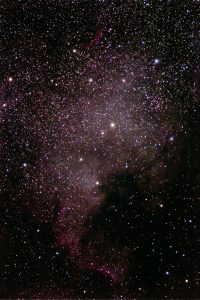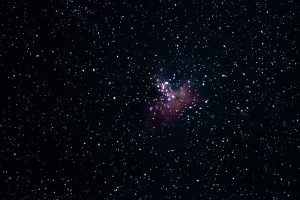 By Simon Tang
By Simon Tang
I’m no pro compared to some of you – okay, compared to most of you. In fact, I’m so not a pro that I have only been doing astronomy since the beginning of 2016. I didn’t buy my first telescope until April of the same year.
So, what qualifies me to tell you about the PrimaLuceLab AIRY 100ED? Nothing really, except that, unlike some who attempted entry brand new into the arena of astronomy and astro tech, I survived the pitfalls, booby traps and endless hours of head scratching and blank stares when acronyms were uttered forth like a spell only Gandalf the Grey could mutter without the lords of hell raining havoc. Along the way, I managed to learn a thing or two.
My default strategy for confronting anything as intimidating as astro tech is humor, so I hope, no matter your skill level, you’ll appreciate a lighter approach to this telescope review. And in all seriousness, there are few things I hate more than seeing someone who has invested hard-earned cash in a first telescope with which they struggle, if only because of that unnecessary intimidation factor. And so, I’ll share what I recently learned in the hope that other newcomers might also survive to graduate to the ranks of the more experienced enthusiasts of this great community.
Out of the Box First Reaction
Returning home with the non-descriptive brown box and removing the tape, I was presented with a bubble-wrapped hard case inside which sat a PrimaLuceLab AIRY 100ED Doublet Apo. This Italian-designed (but sourced in Taiwan) refractor is the brainchild of Filippo Bardaschia and Omar Cauz, who have many years of experience in radio and astrophotography. Their passion to create quality products has been likened to Ferrari producing high-end sports cars for the world to marvel.
But my first glance at the AIRY ED100 evoked a different comparison. After removing the crunchy plastic wrap, the heavy aluminum tube with PrimaLuceLab’s distinct red décor reminded me of the William Optics FLT98. At first glance, the only real difference seemed that the AIRY had red accents, not gold.
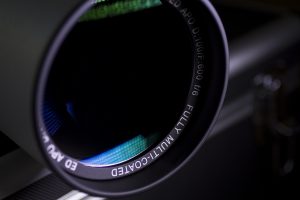
But a quick search on the Internet revealed that the AIRY ED100 was different, after all. Of course, it’s a doublet, where the FLT98 is a triplet, and its aperture is a full 100 mm versus the FLT’s 98 mm, but like the FLT, the AIRY is strikingly beautiful!
As I lifted the tube out of its case to inspect its cool white surface, I felt like I was holding a serious piece of machinery ready to strike down any stray missiles that dared to cross my path. The perfectly machined parts come together to form a cylinder of seemingly absolute viewing power. It certainly had what it needed in the looks department!
I cracked open the lens cap for the first time, and the lens set glowed with the telltale colors off multiple layers of quality antireflection optical coatings. Not a speck of dust cluttered the pristine glass surface (Image 1).
Anxious to test the scope, I proceeded to attach it to my mount, and that’s where everything came to a screeching halt. The AIRY ED100 included mounting rings (Image 2) – beautiful, heavy-duty red ones that matched its other components perfectly, in fact – but there was no dovetail. This is a premium telescope, so I was initially disappointed that a dovetail wasn’t included.
Upon further reflection, I realized that, from PrimaLuceLab’s perspective, including a mounting dovetail would have been a 50-50, hit-or-miss proposition, at best. As it happened, I use a Losmandy-style dovetail and had one handy. Inclusion of a Vixen-style rail with the AIRY 100ED would have been a miss in my case.
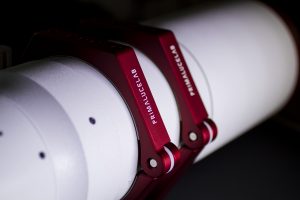
PrimaLuceLab produces a comprehensive line of accessories for its refractors that it calls its PLUS system, for “Prima Luce Universal Systems,” and these accessories include both Vixen- and Losmandy-style dovetails that fit both the top and bottom mounting holes of the included split rings.
When you invest in a telescope of this caliber, you are paying for precision and quality of design. After all, you’re investing in Italian-badged luxury; it makes sense to also invest in accessories designed specifically to compliment that telescope. PrimaLuceLab’s comprehensive PLUS-system approach allows you to select only those components you need and to forgo the cost of accessories you might not need, like duplicative Vixen-style dovetails.
Part of the beauty behind investing in such quality workmanship is the knowledge that everything is crafted to a precise standard. The use of all things metric, from the size of each screw, to every possible attachment, makes life a little easier when figuring out how to connect the assortment of accessories we come to rely on when standing outside in total darkness.
Let’s Get Technical
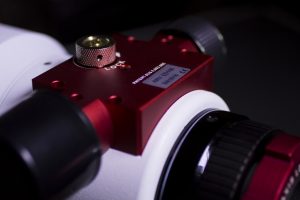
The AIRY 100ED’s apochromatic optical design ensures minimal chromatic aberration, despite deploying the less-popular and often-misunderstood doublet element. At 100-mm aperture and a focal length of 600 mm, you’re treated to a wide view of the sky, sure to fit even the largest of extended objects dead center and still leave room to park your Ferrari in view.
The highly engineered 2.7-inch Hybrid-Drive rack-and-pinion focuser (Image 3) moves back and forth with ease and enough resistance to make sure when you sight the edge of that razor blade from 1000 meters away, you know it’s going to stay in focus.
At a hefty 5 kilograms – that’s 11 pounds to all you imperial troopers out there – the AIRY 100ED’s metal tube is no feather weight, and rightly so. When connected to your mount, it forms a good solid platform on which to hang
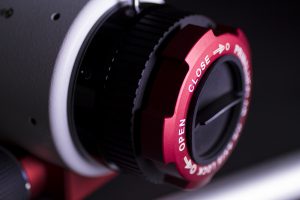
the various accessories required for imaging stars, or maybe just your neighbors garden shed.
Among the components that set the AIRY 100ED Hybrid-Drive focuser apart from those of run-of-the-mill refractors is its OnAxisLock (Image 4), which features a positive, self-centering mechanism, as opposed to standard thumbscrews, that grabs hold of whatever accessory you put into it and tightens its grip without leaving a mark. The system also allows for some serious weight to be gripped, meaning that even the heaviest of cameras will stay firmly in place and not slide out and hit the deck.
The AIRY 100ED allows you to do both visual and photographic astronomy using an assortment of PLUS adapters for attaching your specific camera. Of course, all these pieces are at an extra cost. PrimaLuceLab also offers a 1.0x field flattener. As with the dovetail, I wondered at first why the company didn’t simply include the field flattener with each AIRY 100ED, but then I remembered that not everyone shares my focus on wide-field astrophotography. If you purchased the scope to match with a DayStar Quark and energy-rejection filter, you wouldn’t want to have to absorb the additional cost of a field flattener you’d likely never use.
Now for the engine of this beast, the beating heart and soul, the very stuff astronomical dreams and nightmares are forged from: the lenses, made in Ohara, Japan, of FPL-51. This type of glass is rock hard. In fact, it’s harder than rock! It doesn’t expand and contract like other glass, meaning that when under pressure to perform, it doesn’t go weak at the knees.
However, this doublet is not without its draw backs. There’s a bit of residual chromatic aberration, enough to annoy the most discerning observers when viewing ultra-bright objects at high magnification, but high-magnification planetary views are not why you invest in a fast refractor. You buy it for long-exposure, wide-field astrophotography, and when imaging with monochrome CCDs, using narrow-band filters to produce color images, the resulting images are perfection.
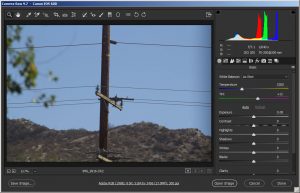
Let the Games Begin
Before we start showing images of nebula and swirling clouds of stars more commonly known as galaxies, we compared the scope to what may at first blush seem an unlikely optic against which to reference an astrophotography system, a Canon L-series 70- to 200-mm Lens.
Why compare a telescope to a camera lens? The idea of comparing your refractor with a reflector telescope is like comparing a Ferrari 488 to a Ducati 1098S. Both can get from point A to point B in neck breaking speeds, except, ones got four wheels. The other only has two, so you wouldn’t do that. But comparing an apo refractor to a photograph lens is comparing four wheels to four – they’re both lens systems. Sure, the 70- to 200-mm’s

maximum focal length is just a third that of the AIRY ED100’s 600 mm, but the test is to compare the refractor’s optical quality with a tried-and-trusted tool that most photo nerds know well.
We took similar shots of an exciting wooden pole outside our window and settled in for some real science. We let the camera decide the color balance automatically and examined the histograms for every critical piece of information. (Images 5 – 8).
The AIRY ED100 performed incredibly well, and both histograms showed similar curves with all three prime colors separated with good strong peaks. In hindsight, the Canon’s excellent glass provided a perfect benchmark against which to measure the AIRY ED100.
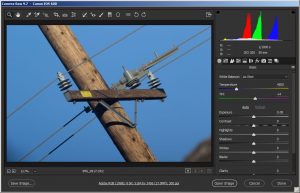
When inspected close in, very little evidence of chromatic aberration was noticeable in the AIRY ED100 in full daylight. The images produced are as sharp as the Canon lens – so sharp, you could probably take an image of someone’s credit card from 10 miles away and still read it, you know, to finance more accessories to attach to your already overweight behemoth.
But that’s not what you want to do with your telescope. No! You want to see tiny bright dots against a black background. Interestingly, that’s where refractors shine. When compared to a reflector telescope, refractors make the skies feel more organic – that smooth, glossy feeling like you’re looking through glass. Definition between star
and background is so well displayed when looking through an eyepiece, you’d be forgiven for worrying that the

scope is focusing cosmic rays into your retina and turning you into the subject of the next Incredible Hulk movie. Cloudy nebulae glow with excitement with just a slight hint of color.
Does the AIRY ED100 truly deliver its promise to mesmerize you with life-changing moments? In manner of speaking, it does. However, where this scope begins to fail is when observing bright objects with higher powered eyepieces. We tried a 40-mm, 18-mm and a 7-mm. The 7-mm eyepiece seemed to represent the tipping point, exaggerating color shift when compared to the best triplet apos. But let’s face it, high-magnification visual observing of planets is not why you buy a fast refractor, so that bit of chromatic aberration is hardly worth mentioning.
Where the AIRY ED100 excels is in vast views of the night sky. One can always tell when looking through glass versus a mirror, and this scope certainly doesn’t disappoint when set up properly for wide-field visual work.
So, what happens when you attach your camera to that life-squeezing 2-inch OnAxisLock? Consider Images 9-12 at the end of this article. The results speak for themselves.
Final Thoughts
How does the AIRY ED100 measure up? Overall, I would be quite happy to own one. The optics are extremely good, and its size and portability are brilliant – you can carry it in your arms like Paris Hilton clutching her beloved pooch.
The design and finish of the AIRY ED100 feel like quality, and you just cannot help but admire the orange-peel surface, which doubles up as grip to make sure you have a firm hand around it. The smooth red accents lend themselves to a well-tailored suit. The mechanics of the focuser are good and smooth – a little stiff on the knobs, but that stiffness helps to nail that fine focus without over shooting the mark.
 As I say, the images its optics produce speak volumes. Stars are pinpoints in the night sky. In fact, the AIRY ED100 performs so well that it can be difficult to work out which star is which when doing an alignment process. Even though this is a doublet, it still gives fine results with relatively low chromatic aberration, and while most astrophotographers would consider the field flattener a must, the AIRY ED100 can produce acceptable results without it.
As I say, the images its optics produce speak volumes. Stars are pinpoints in the night sky. In fact, the AIRY ED100 performs so well that it can be difficult to work out which star is which when doing an alignment process. Even though this is a doublet, it still gives fine results with relatively low chromatic aberration, and while most astrophotographers would consider the field flattener a must, the AIRY ED100 can produce acceptable results without it.
Keep scrolling to see Images 9-12 below.
Simon Tang was born in London, England and moved to the U.S. in 2006 to follow his career in TV and Film. He has always had a fascination of space and the sky and decided to take up astronomy. He purchased his first telescope at the beginning of 2016, and since then has embarked on a journey of exploration all from the comfort of his own backyard.
###
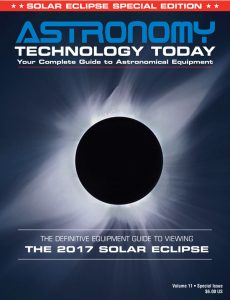 The Astronomy Technology Today editorial staff would like to take this opportunity to remind you of the availability of our Solar eclipse equipment guide – The Definitive Equipment Guide to the 2017 Solar Eclipse. Our goal with the 40 page publication is to provide an easy-to-consume introduction to the technological options for viewing and imaging the Great Solar Eclipse. We cover the gamut of options available including building you own solar viewer, solar glasses, smart phones, DSLR cameras, using astronomy telescopes, solar telescopes, using binoculars, solar filters (including a DYI filter option), CCD astro cameras, astro video cameras, webcams and much more. You can view the guide on our website here – its free and there is no requirement to sign up to read the guide.
The Astronomy Technology Today editorial staff would like to take this opportunity to remind you of the availability of our Solar eclipse equipment guide – The Definitive Equipment Guide to the 2017 Solar Eclipse. Our goal with the 40 page publication is to provide an easy-to-consume introduction to the technological options for viewing and imaging the Great Solar Eclipse. We cover the gamut of options available including building you own solar viewer, solar glasses, smart phones, DSLR cameras, using astronomy telescopes, solar telescopes, using binoculars, solar filters (including a DYI filter option), CCD astro cameras, astro video cameras, webcams and much more. You can view the guide on our website here – its free and there is no requirement to sign up to read the guide.

